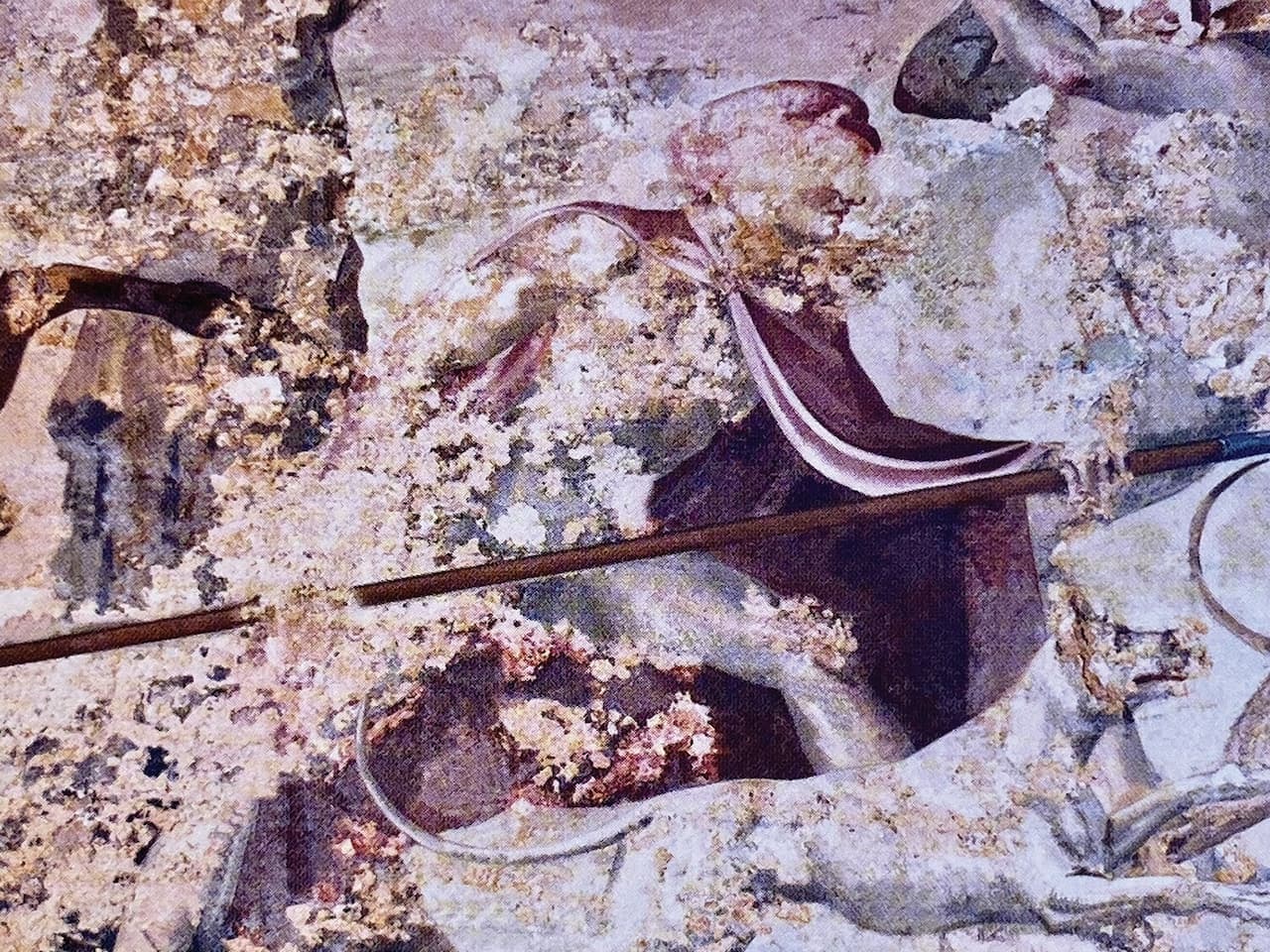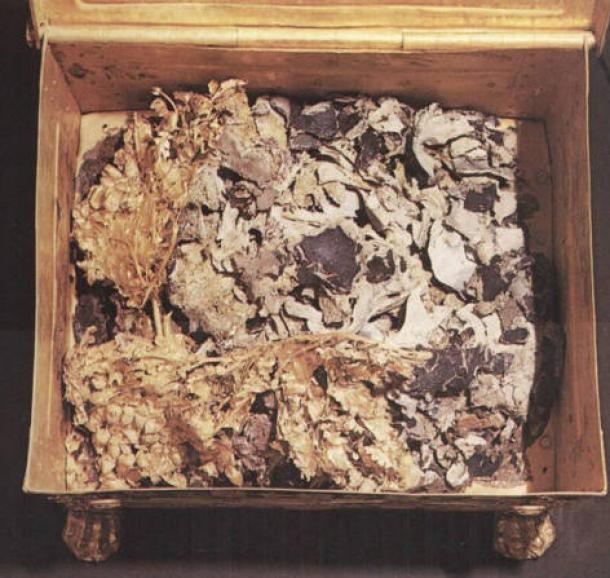Archeologists uncover Alexander the Great’s royal tunic in Vergina
 Photo collage of Tomb II ("Tomb of Philip II") at Vergina and Male bones and textile fragments discovered in the Tomb II that are believed to be pieces of the tunic of Alexander the Great. (Photos via Theodore G. Antikas et al.)
Photo collage of Tomb II ("Tomb of Philip II") at Vergina and Male bones and textile fragments discovered in the Tomb II that are believed to be pieces of the tunic of Alexander the Great. (Photos via Theodore G. Antikas et al.)
An international team of archaeologists, led by Antonis Bartsiokas from Democritus University of Thrace in Greece, has made a significant discovery at the Royal Tombs of Vergina. They have identified a tunic believed to have once belonged to Alexander the Great.
In a paper published in the Journal of Field Archaeology, Bartsiokas presents compelling evidence surrounding a striking purple and white tunic.
The research also claims to have definitively identified the remains of three individuals entombed in this notable burial site. Prior studies indicated that several members of Alexander’s family were interred at Vergina; however, the exact burial site of the famed Macedonian king remains unknown.

Identifications of notable figures
Bartsiokas and his colleagues reexamined three tombs at the site, informally labeled Tombs I, II and III. Through a combination of testing techniques and historical references, the researchers established that the remains in Tomb I belonged to Philip II, Alexander‘s father.
Those in Tomb II were identified as belonging to Alexander’s half-brother, Philip III, while Tomb III contained the remains of Alexander IV, Alexander’s son, who tragically died in his teens.

Significance of tunic
The purple and white tunic found in Tomb II, which resembles the fitted jackets worn by Captain Picard from “Star Trek: The Next Generation,” has garnered particular interest.
Using gas chromatography and Fourier-transform infrared spectroscopy, the team determined that the tunic was made from cotton and dyed with a color reserved exclusively for the elite.
Connections to ancient Persia
Adding to the intrigue, the tunic was depicted in a frieze featuring a hunter identified as Alexander.
The tunic was discovered alongside a scepter, an oak wreath, and a diadem, all crafted from gold, suggesting a possible connection to ancient Persia and, by extension, to Alexander himself.

Unresolved mysteries surrounding findings
While the research team could not explain why the tunic and other gold artifacts associated with Alexander the Great were left in the tomb, they speculate that it may relate to Philip III’s coronation following Alexander’s death.
In conclusion, this discovery not only sheds light on the burial practices of the time but also deepens our understanding of the historical figures entwined with Alexander the Great’s legacy.



